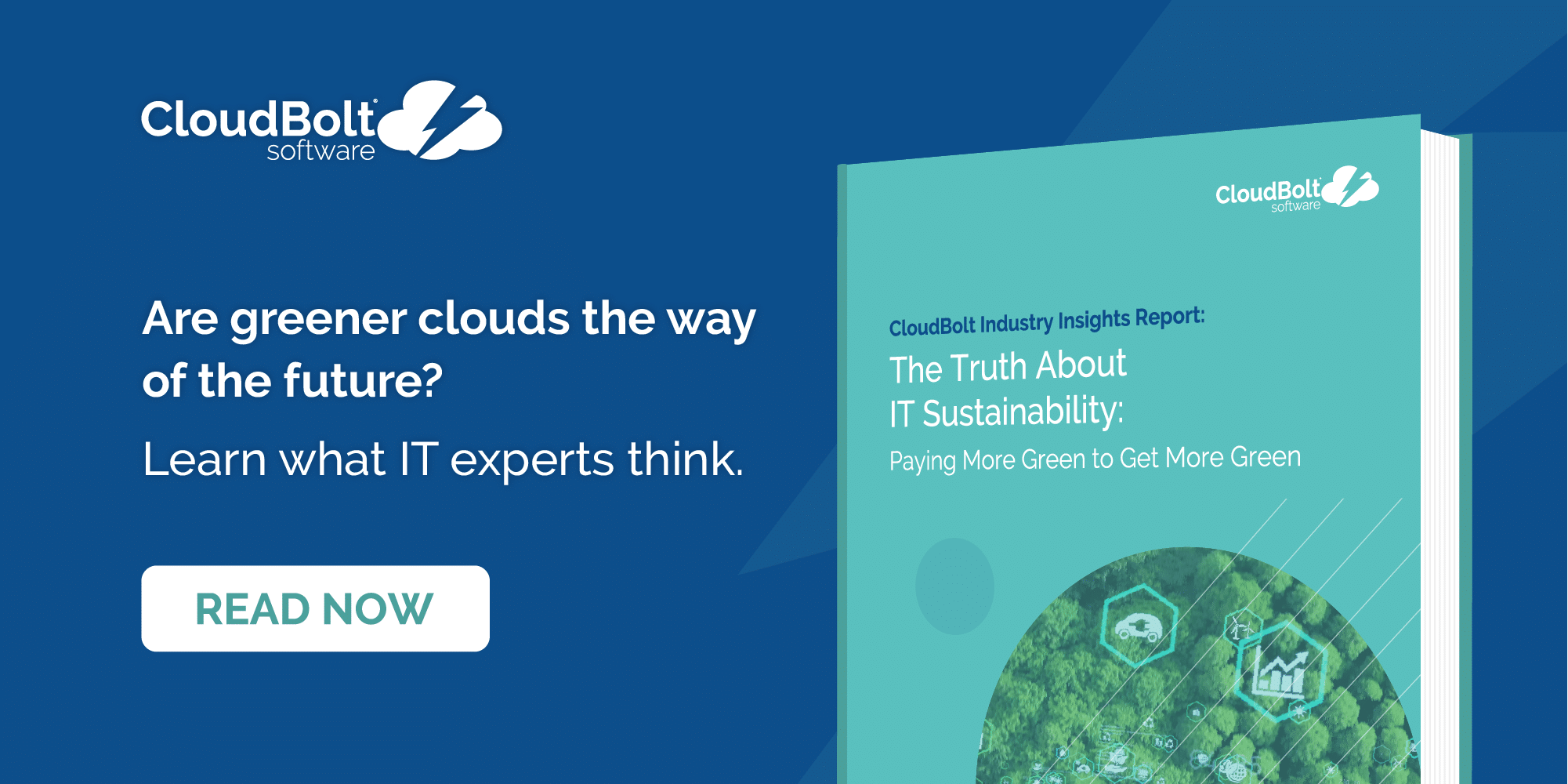Why Sustainability Matters in the New Cloud Order

If you haven’t heard, CloudBolt has released its third CloudBolt Industry Insights (CII) report, this one focusing on the results of a survey of over 250 global IT leaders on the topics of sustainability and how to go green in the cloud world.
For enterprises today, sustainability is no longer a buzzword or a noble intention being perpetually punted into the future. Organizations are increasingly expected to put their money where their mouth is and make good on green intentions. State Street, one of the world’s largest investors, has announced it will use its $3 trillion investment arm to vote against the boards of big companies that lag behind on environmental, social and governance (ESG) standards.
We at CloudBolt know it is now everyone’s job to help leave the world a better place for generations to come. Yet, we also have day jobs to do. How far has the sustainability agenda reached the IT ranks? How important is sustainability in driving infrastructure investment decisions? Have we reached an inflection point in the New Cloud Order whereby rhetoric maps to revenue?
As a refresher, this is how we view the New Cloud Order at CloudBolt: old, siloed, myopic ways of doing business no longer cut it. Not when technology, tools, processes, and ideas change as rapidly as they do now.
Reordering of strategic priorities require comprehensive solutions and improvement in three key areas: automation, optimization, and integration. That’s where the New Cloud Order comes into play. It demands simplification of complexities using intelligent, agile, and interdependent approaches to vexing hybrid cloud problems. Self-service, cost and security optimization and simplifying integrations all play a factor here.
Sustainability + New Cloud Order, the Way of the Future
So, how does this tie into IT sustainability? As it turns out, IT has grown an environmental conscience, and a big one at that. Previously, cloud decisions were based on two concrete dimensions: Compute + Cost. A third dimension has emerged into the buying equation: Compute + Cost + CONSCIENCE. Conscience is playing an increasingly important role in selecting cloud providers based on the provider’s environmental commitment and their impact on carbon footprint.
Conscience drives IT leaders and practitioners to be much more purposeful in the infrastructure choices they make, aiming to ensure a greener future for all. This stems from a firm belief that cloud infrastructure choices have a material impact on the environment. This impact is now seen as an urgent imperative as the majority of IT leaders (76%) see climate change as an existential threat.
The rising tide raises all sustainable ships. Some issues transcend normal competitive boundaries. Sustainability is one of them. Whether we complement or compete, the most important thing is that everyone participating in the New Cloud Order contributes to lower carbon footprints and better conservation. No one company can solve it all. But together, through our fractional efforts, cloud as an industry can make an important difference.
Why sustainability has become more than a buzzword in IT. Learn more in CloudBolt Industry Insights.
Related Blogs

The Future of Cloud Cost Management and Optimization is Here with CloudBolt
It’s an exciting time to be in the Cloud Cost Management and Optimization space. The landscape is quickly changing as…

